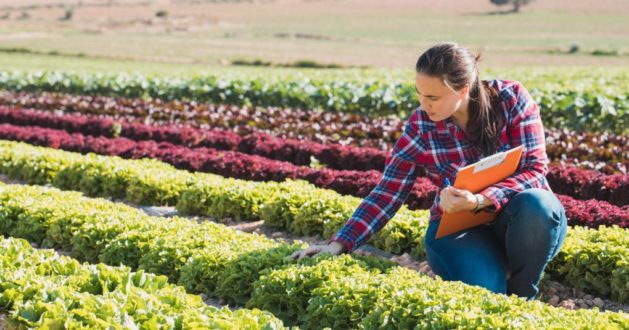Jan 23, 2020FDA: Outbreaks show value of implementing produce safety standards
Fresh produce plays an important part of an overall healthy diet. While millions of servings of fresh produce are consumed safely every day, recent outbreaks of foodborne illness have once again placed produce safety in the spotlight. We must continue to build upon and implement the science- and risk-based controls envisioned by Congress through the Food Safety Modernization Act (FSMA), including those set forth in the Produce Safety Rule.
Last year was the first in which the U.S. Food and Drug Administration and our state regulatory counterparts began conducting routine inspections of large farms for this rule established by FSMA. (In general, we’re not addressing sprouts operations here, which have additional requirements and earlier compliance dates.) Leading up to 2019, the agency has collaborated with the National Association of State Departments of Agriculture (NASDA) and our state partners to help prepare farmers to comply with the rule. We have also supported states in the development of their own produce safety programs.
The recent produce outbreaks show that we must remain laser-focused on prevention to help bend the curve of foodborne illness. We remain committed to doing everything we can to prevent outbreaks, working with fellow regulators and the food industry to identify and address causes and keep consumers aware of potential risks.
And, we are making progress in realizing the promises of FSMA with our implementation of the produce safety standards under the rule.
Inspections of farms, large and small
The FDA and our state regulatory partners are completing the first year of routine inspections of large farms covered by the Produce Safety Rule. The states, which are conducting the lion’s share of this work domestically, have conducted almost 1,000 farm inspections under a cooperative agreement with FDA. The agency conducted 183 domestic and foreign produce inspections in 2019. The first routine inspections of small farms are set to begin later this month.
Staying true to our “educate before and while we regulate” philosophy, FDA has focused on education, training and outreach to farms. This outreach includes about 1,400 On-Farm Readiness ReviewsExternal Link Disclaimer that NASDA developed in collaboration with the FDA and state and extension partners to help farmers assess how ready they are to comply with the rule.
The FDA also established the State Produce Implementation Cooperative Agreement Program (CAP), which has helped establish state and territorial produce safety programs. This past year the agency awarded $27.1 million to 47 states and American Samoa, with a total of $112.3 million in CAP grants awarded over the past four years. This funding is being used to conduct inspections, as well as to support education, outreach, and technical assistance activities.
We also renewed our commitment to work with NASDA, which is partnering with Association of Food and Drug Officials (AFDO)External Link Disclaimer, in using $1.3 million in FDA funding to further support the development and maintenance of strong produce safety programs in states and territories.
The FDA will continue to work with our state regulatory partners to maintain consistency in how we do inspections and how we follow up with farms if any observations are made.
Advancing agricultural water standards
One of the particular challenges we’ve faced with the Produce Safety Rule is ensuring that our standards for agricultural water are protective of public health and workable for farms of all kinds and sizes. After we finalized the rule, we heard from the produce community that some of the requirements were too complex, costly, and unworkable, and we determined that we should, based on these and other comments, consider other approaches to address the agricultural water requirements.
We extended the compliance dates for certain agricultural water requirements for covered produce other than sprouts while we are reviewing emerging science and perspectives from experts and stakeholders. FDA produce safety experts have participated in more than 200 educational farm tours, many of which were specifically conducted to observe diverse operations as they relate to the use of agricultural water.
FDA experts are now working on a rulemaking to propose an approach that offers flexibility and addresses the practical challenges of implementing some of the agricultural water requirements across the diversity in farm types, water sources, and water uses. We hope to issue proposed revisions to those agricultural water requirements in 2020.
In the meantime, we continue to stress to growers the importance of using good agricultural practices (GAPs) for agricultural water. For example, the FDA’s GAPs guidance recommends that growers assess their water quality, considering their water sources and distribution systems, practices, and conditions, as well as land uses, to identify potential sources of contamination and apply controls to minimize microbial food safety hazards.
To facilitate another resource for farmers, and to advance the science around agricultural water, the FDA is also working with the U.S. Environmental Protection Agency to develop a testing protocol for evaluating the efficacy of antimicrobial products for use in treating agricultural water.
Imported produce – same safety standards as domestically produced
We are committed to ensuring that foods imported from other countries are held to the same standards as food produced domestically. In February 2019, we released the “FDA Strategy for the Safety of Imported Foods,” describing our comprehensive approach to imported food safety.
Part of our strategy is that we intend to help ensure that farmers in other countries who export to the U.S. have access to resources that include training and On-Farm Readiness Reviews.
We also have the Foreign Supplier Verification Program (FSVP) rule under FSMA, which requires importers to ensure that their suppliers are meeting U.S. food safety standards. Routine FSVP inspections of produce importers began in the fall.
The FDA has enforcement tools and we will act when there is a public health risk, no matter where in the world the food is imported from. For example, a warning letter was issued in August 2019 to the distributor of papaya imported from Mexico that was tied to an outbreak of Salmonella Uganda. Citing significant violations, the FDA raised the possibility of debarment to prohibit the importer from bringing foods into the U.S. for up to five years.
Micro testing to advance prevention strategy
Surveillance sampling is an important part of our public health mission, particularly considering how FSMA has shifted our focus as an agency to preventing foodborne illness. We have two ongoing microbiological surveillance sampling assignments in fresh herbs and frozen berries, types of produce that have been associated with past outbreaks of foodborne illness. Further, the FDA completed the microbiological surveillance sampling of processed avocados and guacamoles and will publish a final summary of its findings in 2020.
The FDA is conducting a focused assignment to test samples of romaine lettuce grown in the Central Coast, Central Valley, and Imperial Valley in California and in Yuma, Arizona for pathogenic E.coli and Salmonella. This assignment follows multiple outbreaks of foodborne illness associated with romaine lettuce over the past two years. This also follows testing that the FDA conducted last summer in which samples of romaine lettuce grown in the Yuma region were collected from commercial coolers and cold storage facilities. No pathogenic bacteria were found in the testing.
Across all of these assignments, thousands of samples have and will be tested for pathogens. While most of the samples have been free of pathogens, there have been a small number of pathogens found. The FDA’s response has included voluntary recalls and import alerts, in addition to investigating the cause of the contamination.
The path forward for produce safety
Our commitment to advancing produce safety is unwavering. We will continue to work closely with our state regulatory partners to help ensure that farms understand the requirements for produce safety and to provide consistency across programs. The agency intends to advance agricultural water standards that are feasible for the people who must meet them and protect public health. And, as we move into 2020, we will reach another critical implementation milestone – the initiation of routine inspections for small farms.
We know that getting this right is paramount – and remain committed to working together to bend the curve of foodborne illness.
– Frank Yiannas, Deputy Commissioner for Food Policy and Response, and Judy McMeekin, Acting Associate Commissioner for Regulatory Affairs

















